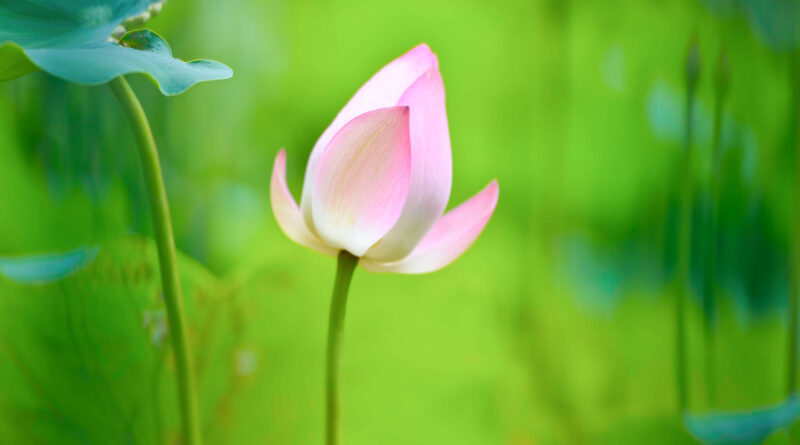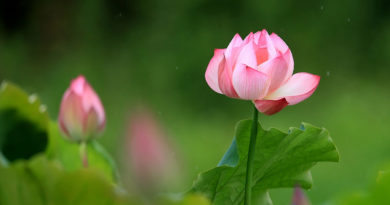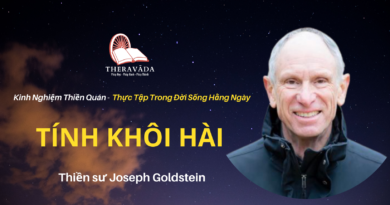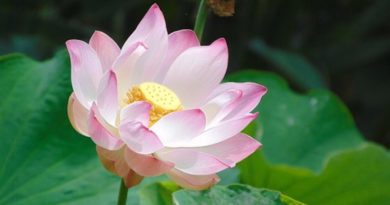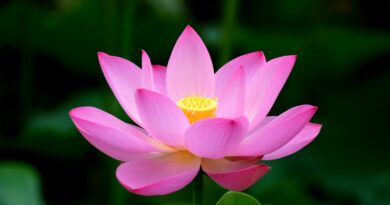A FISTFUL OF SAND – INCONSTANCY
A FISTFUL OF SAND
INCONSTANCY
Question: I was wondering if you could explain inconstancy and the emptiness of the mind.
Ajaan Suwat: Inconstancy is one of the three characteristics, a teaching on the level of insight and discernment.
The word inconstancy (anicca), for the most part, is used in connection with fabrications (sankhara): sankhara anicca — fabrications are inconstant. The word “fabrications” here carries a very broad meaning on the level of theoretical Dhamma, but in terms of the practice for giving rise to discernment, “fabrications” means the body and mind. So while you listen to this talk on inconstancy, focus your attention on your own body, for it’s something easy to know and to see. Then I’ll explain the changes and inconstancy in it.
What is the purpose of studying inconstancy? This is something we should look into. Studying inconstancy has many benefits. In particular, the Buddha taught us to be mindful of the body, mindful of the fact that once the body is born it has to keep changing day in and day out. The happiness and pleasures we get from the body on a daily basis are inconstant. If they were constant, we wouldn’t have to look for happiness and pleasure anywhere else. But the fact is that the pleasure we have, as soon as we’ve experienced it for a while, gives out — regardless of what kind of pleasure it is. This is why the Buddha says it’s inconstant: it requires us to stir ourselves to search, to store things up.
The things we stir ourselves to search for: if we gain things that are good, that we like, we get possessive. And when there are things we love and like, other people like them, too. Many people who see what we have will want it as well. This gives rise to competition, to cheating and swindling, as people try to get what they want. From this comes hatred, animosity, and vengeance. This shows the inconstancy within the body, the constant changes in the happiness we want. The mind suffers negative impacts from the pleasure and pain that are such a confusing turmoil within it.
When we realize this truth, the Buddha taught us to develop the discernment needed to comprehend it. And he laid down another principle: Natthi santi param sukham — there is no happiness higher than peace. The peace here is peace in the Dhamma, the peace that comes from practicing the Dhamma. He pointed out that peace is the highest happiness and showed us the path to that peace, which we’re practicing right now: developing tranquility and insight, exercising restraint over our words and deeds, and training our mind.
So we should turn in to look at ourselves. When we understand that the body and the pleasures we experience are inconstant, the mind state that used to feel attachment, that used to deceive itself into thinking that it was in possession of happiness …. We try to change things so that our pleasure will be constant. We don’t see the drawbacks of the suffering we’ve been through. Delusion and misunderstanding thus arise in the mind that hasn’t seen the peace offering a happiness more subtle and refined than what we’re generally used to. This is why we have to depend on the Dhamma, depend on our conviction in the Buddha. If we look at the fabrications that the Buddha said are inconstant and stressful, we’ll see that what he said is really true. The pleasures we’ve experienced don’t really suffice. We have to study, to look for knowledge, to find a refuge more dependable than what we’ve known. This is why we have to depend on the teachings of the Buddha. When we’ve heard them, we train our minds to be still, to let go. We have to give ourselves the opportunity to make our minds empty and still.
When we say the mind is empty, that means that it’s disengaged. It’s not restless and distracted. It doesn’t have a lot of preoccupations. The same as when we do demanding work: if we keep at it a lot, the body gets tired. When it’s tired, we disengage it from the work. We sit down or lie down to rest. When it has rested at normalcy, the tiredness goes away. We regain our strength. When we’ve regained our strength, we can resume our work. We see that working uses up energy. When our energy is used up, resting gathers energy. The resting is part of the pleasure and ease that comes when the body is “empty”: in other words, disengaged from its work.
It’s the same with the mind. We look for happiness all the time because we want precisely this sense of ease. When the mind isn’t empty and disengaged, we keep looking. We should train the mind to be still. When the mind is still, here in this sense of awareness itself, it’s empty and disengaged. It’s not thinking about anything. It’s empty through its stillness. But we can’t keep it empty and still like this all the time. We still have our aggregates of clinging. We still have our eyes, and the mind wants to see things. We still have our ears, nose, tongue, and body. There are still sounds, smells, tastes, and tactile sensations. We still have feelings of pleasure and pain. These things are always disturbing us. So this is why the Buddha teaches us, once we’ve gotten the mind to settle down and be still, to contemplate the inconstancy of the body. That way we’ll come to understand that the body is really inconstant and stressful. As long as we’re still attached to the body as “me” or “mine”, we’ll have to suffer from aging, illness, and death at all times.
So we should let go of these things and hold onto the Dhamma, making the mind still. That way we’ll give rise to stillness and ease. We’ll see that the body is inconstant, aging and wasting away; that stress and suffering arise because of this inconstancy. Ultimately the whole body falls apart. When it falls apart, what is it like? It grows putrid and decays. It doesn’t belong to anyone. This is why the Buddha taught us to yathabhutam sammappaññaya datthabbam: to see things as they as with right discernment, to let them go, to have no attachment to the aggregates, not to view them as self. When this is the case, the mind won’t feel any greed, for it sees that greed serves no purpose. When we’ve seen this truth, the angers we’ve felt in the past will grow weaker. Knowledge will arise in the place of our past delusions. When the mind contemplates and develops discernment to the point where it’s able once and for all to make itself pure, totally abandoning the defilements of greed, anger, and delusion — or passion, aversion, and delusion — then that’s called a mind truly empty: empty of defilement, empty of greed, anger, and delusion, because it’s no longer carrying anything around. If you carry things, they’re heavy. They defile the mind. If you don’t hold on and carry them, the mind is empty. Pure. It doesn’t have to look for anything ever again.
This emptiness of the mind comes from our understanding inconstancy. So if you aspire to this emptiness, you should contemplate inconstancy to see it clearly, to make your discernment alert and wise to the truth. The mind — whose defilements depend on inconstant things to give rise to greed, anger, and delusion — won’t be able to give rise to them any more, because it’s grown disenchanted. It doesn’t want them. It will grow empty and enter into stillness. The mind is empty because its defilements are gone.
To summarize: the three characteristics of inconstancy, stress, and not-self exist only in the mind with defilements. When the mind has the discernment to kill off the defilements for good, there’s nothing inconstant, stressful, or not-self within it. That’s why it’s empty. As for our minds, at present they’re not empty because they haven’t been able to chase the defilements all out. Even though we’re able to develop mindfulness and meditate to the point where we experience stillness and ease, that’s only a little bit of temporary emptiness. As soon as mindfulness lapses, things come in to disturb us all over again. That’s because we’re not empty of defilement.
The ultimate defilement is unawareness. Every defilement, whether blatant, moderate, or subtle, has unawareness mixed in with it. This is why the Buddha taught us to train our minds to give rise to awareness, the opponent of unawareness. Whichever side is stronger will win out and hold power over the mind. If awareness wins out, the defilements have no place to stay. If unawareness wins out, there’s no peace and ease. No purity. The mind isn’t empty. Stress and suffering arise.
To know the unawareness already in the mind is awfully difficult. It’s like using darkness to illuminate darkness: you can’t see anything. Or like two blind people leading each other along: they’ll have a hard time escaping from dangers and reaching their goal. This is why we have to depend on people with good eyes: in other words, mindfulness and discernment. These are the crucial factors that will lead us to the end of the path.
An example of how we can put mindfulness to use: suppose we aren’t yet acquainted with anicca. We don’t know where it is. When we hear that anicca refers to the inconstancy of the five aggregates, beginning with physical form, we apply mindfulness to keeping these things in mind, to see if they really are inconstant. Or suppose we feel that we gain pleasure from holding onto the body as our self; we keep on providing for it and fixing it, so that we don’t see its stress and inconstancy. In this way we’ve gone astray from the Buddha’s teachings. So we use mindfulness to keep the body in mind. For example, we’re mindful of hair. Is our hair constant? Does it always stay the same, or not? Think of the first strand of hair that grew on your head. It was cut off long ago. The hair we have now is new hair. It keeps changing. The first strand of hair no longer serves us any purpose. We don’t even know where it’s gone. This is one way of contemplating inconstancy.
As for anatta, or not-self: The hair that, in the past, we thought was ours — where is it now? If we think in this way we’ll come to understand the teaching on not-self. If we contemplate the things that the Buddha said are not-self, we’ll see that what he said is absolutely true. We’ll see the truth, and our own mind is what sees the truth in line with what the Buddha said: our body doesn’t have any essence; it just keeps sloughing away. And as for what he said about the body’s being unclean: when it dies, no one can dress it up to make it really clean. As soon as it falls down dead, everyone detests it. When we reflect more and more profoundly on this, the mind will come to accept that what the Buddha taught is the genuine truth. When the mind accepts this, its ignorance will gradually disappear. Discernment — knowledge in line with the Buddha’s teachings — will gradually take shape in our minds.
So when the mind contemplates hair profoundly until it knows the truth and its ignorance disappears, knowledge — beginning with knowledge about the true nature of our hair — will arise. The unawareness with which we clung to the hair as us or ours, seeing it as beautiful, dressing it up with perfumes, making it lovely and attractive: we’ll see that all that was an act of self-delusion. If the true nature of these things was really good, we wouldn’t have to do any of that, for it would already be good. It’s because it’s not good that we have to make it good. That’s one way in which our own views have deluded us. The Buddha told us to know the truth of this matter so that the mind will be able to let go. When the mind lets go, all its defilements lighten and disappear because our views are right. Defilements arise because of wrong views, because of ignorance or unawareness of the truth. Ignorance gives rise to delusion and mistaken assumptions, which turn into wrong views. This is why we have to make an effort to give rise to awareness.
For example: suppose we aren’t aware that the hair, nails, teeth, skin, flesh, tendons, bones in our body are composed of the properties of earth, water, wind, and fire. Actually, this physical form of ours is nothing more than the four properties. The water property includes all the liquid parts of the body, such as bile, phlegm, lymph, mucus, urine, blood, fat, oil. The earth property includes all the hard and solid parts, such as hair of the head, hair of the body, nails, teeth, skin, flesh, tendons, bones, bone marrow, etc. The wind property includes the breath, the breath energy in the stomach, the energy that rises up in the body, the energy that goes down, the energy that flows all over the body. The fire property includes the warmth that keeps the body from decaying, the warmth that helps with the digestion, and the warmth that keeps the body alive at the right temperature. Altogether, the body is nothing but these four properties. When we don’t realize this, that’s called unawareness. We aren’t acquainted with the body, the aggregates. When we learn about this, awareness can begin to arise.
This is why we’re taught to contemplate the parts of the body: kesa, hair of the head; loma, hair of the body; nakha, nails; danta, teeth; taco, skin. New monks are taught these things from the very day of their ordination so that they can eliminate unawareness and give rise to awareness through the light of mindfulness and discernment. I ask that you develop a lot of mindfulness and discernment in this area so that your minds will reach the emptiness and freedom you want.
Discernment here means the awareness that comes from studying the five aggregates. No other knowledge can destroy this defilement of unawareness. So when you want to destroy the defilement of unawareness, you have to carefully study the five aggregates, beginning with the body, until you see the four noble truths right here in the five aggregates. Actually, the five aggregates are things whose true nature is well within our power to study and know. First there’s the aggregate of form, or the physical body. Then there are the mental aggregates: feeling, perception, mental fabrications, and consciousness. These are things we can know. We have to study and practice so that we can know all four of these mental aggregates in line with their true nature. Each of these aggregates covers a lot of aspects. For instance, physical form: yankinci rupam atitanagata-paccuppannam ajjhattam va bahiddha va — there are all kinds of forms that can fool and delude us: internal and external; blatant and subtle; past, present, and future. But when insight arises in full strength, it’ll show us the way to see without much difficulty. All that’s needed is that you first start with the basic meditation themes, such as the hair of the head, and see them clearly in line with their nature. Then discernment will gradually arise.
Do you understand this? You can say that the Dhamma is subtle, but you can also say that it’s right here within us, within our own bodies. All the things I’ve discussed here: when you haven’t yet put them into practice but would like to see these truths, you shouldn’t let mindfulness wander outside the body. Contemplate things in line with their true nature. Don’t let prejudice get in the way. Remind yourself that this is the Dhamma.
That’s enough explanation for now. When you study things but don’t put them into practice, your knowledge doesn’t get you anywhere. So now that you know the path, I’d like you to focus your intention on practicing a lot. I’ll ask to stop here so that you can put your knowledge into practice and benefit from it.
May you all meet with well being.

